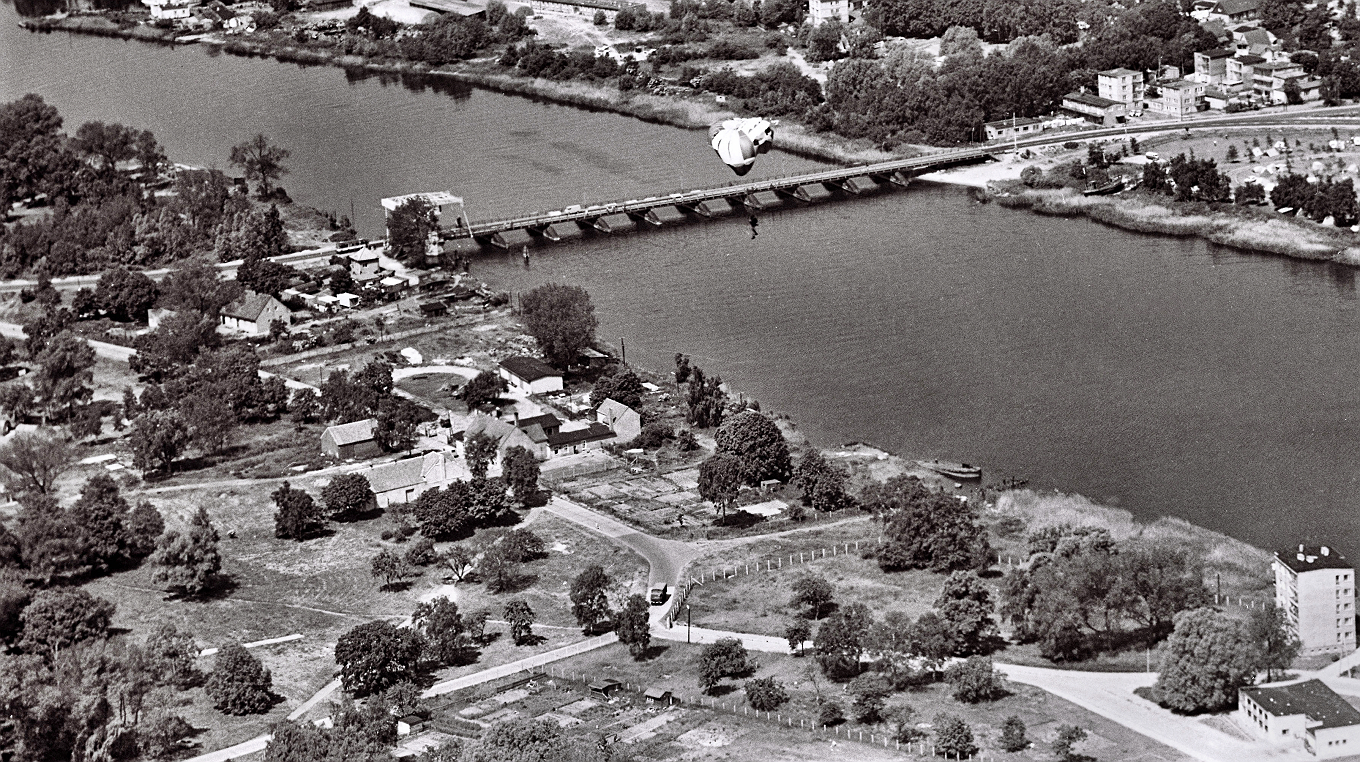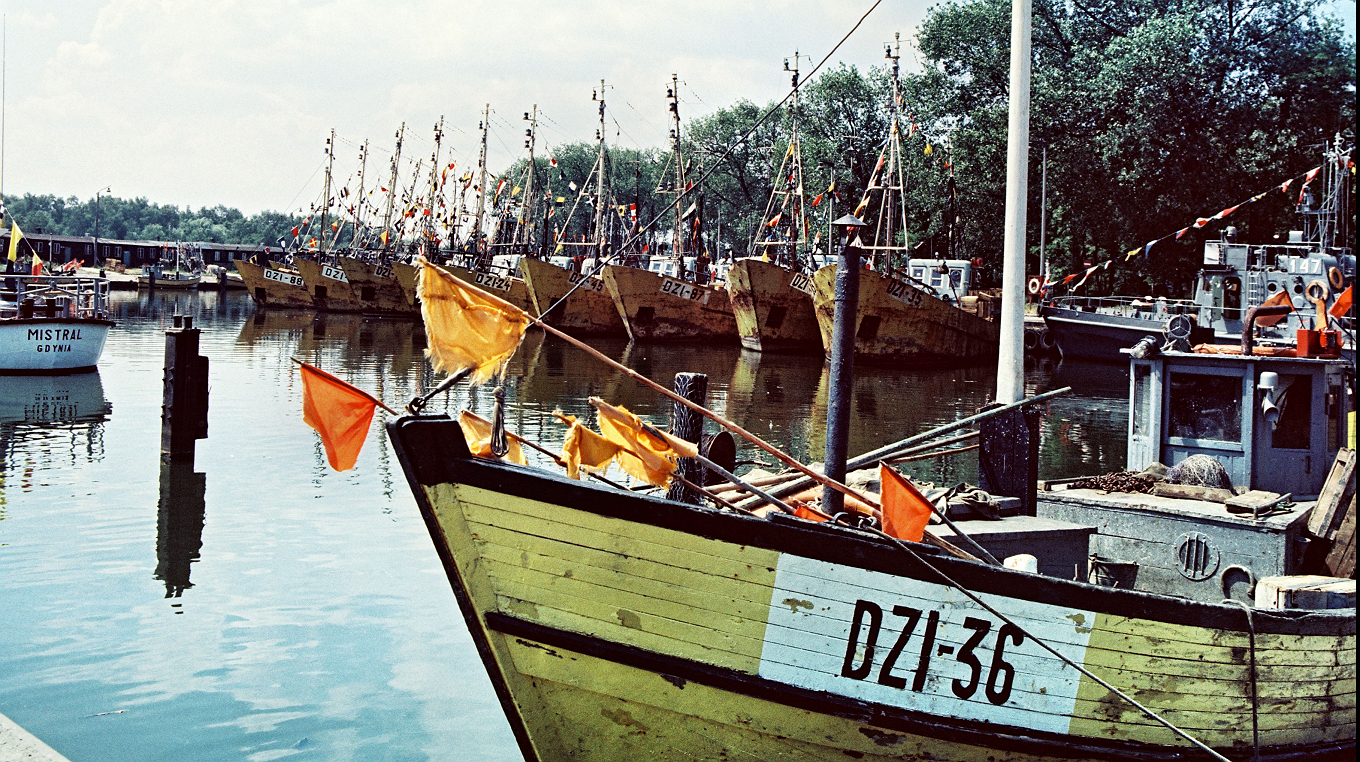The first mention of Dziwnów appeared in chronicles in 1243. It referred to the privilege of Barnim I Dobry (the Szczecin and Pomerania Duke of the Gryfit dynasty) who granted customs reduction to Szczecin merchants for goods transported by ships from Szczecin to Kołobrzeg. The Dziwna river, at that time connecting the Szczecin Lagoon with the Baltic Sea and currently considered a strait between the Wrzosowska Bay and the Baltic Sea, was a highly significant trading route that connected Szczecin with eastern Baltic Sea ports. By the late 13th century its significance began to decline. As a result of progressing sand encroachment, sailing down the river was hampered, which resulted in the loss of significance of the Dziwnów trading route.
Over the next hundred years the region of Dziwnów was not particularly described, therefore, it is difficult to find relevant information about it. The area was sparsely populated and people living within the present commune dealt with fisheries and amber treatment. The significance of the Dziwnów area increased in the early 17th century and was closely related to the presence of Swedish troops in Western Pomerania, which, by virtue of the agreement with Boguslaw XIV Duke of Pomerania, arrived at this area. The Swedish army built an earthen fort at the mouth of the Dziwna river towards the sea. It was situated approximately in north-western part of the Martwa Dziwna lake, which formerly was a river's mouth to the sea, and it survived until the beginning of the 18th century. When the Swedish troops left West Pomerania, the structure was gradually decaying and, at present, there are no traces of it.
During the inventory carried out in 1780 on the area of Dziwnów, only four fisherman's houses located near today's Dziwnówek were reported. They belonged to the manor Wrzosowo, which previously fell under the Cathedral Chapter in Kamień Pomorski. In the early 19th century, the army, this time the French one, arrived in there, however, it stayed there much shorter than the Swedish army before. After the defeat of Napoleon and the retreat of his army from East Europe those lands returned under the Prussian rule, which resulted in more and more people, who wanted to settle in the area of Dziwnów, coming there. Gradually Dziwnów, at that time divided into Berg Divenow and Ost Divenow, began to transform from the fishing village into the resort.

Since 1828 Dziwnów, as well as Międzywodzie, Dziwnówek and Wapno (the village currently no longer existing, but formerly situated between Dziwnówek and Łukęcin), have been considered seaside resorts. At that time accommodation could be found mainly in private fisherman's houses, however, from 1844 onwards, the situation began to change. The first holiday house was built and, soon after that, other houses were built as well, so by 1867 there were 31 houses in total. Along with the construction of substantial fisherman's houses, it started considerably altered the image of the entire resort. In 1870 Dziwnów had already 171 permanent residents. At the end of the 19th century the saline springs were discovered there, resulting in opening a sanatorium and attracting more and more people to Dziwnów. It had a great impact on further development of the entire resort. Apart from holiday homes, such facilities as guesthouses, hotels and various multipurpose buildings began to grow. Walking trails, a promenade and a park were also opened to the public at that time.
At the turn of the 19th and 20th century the decision was made to improve sailing, which resulted in tunneling under sand dunes and directing the mouth of the river to the sea along the new ditch (the present mouth). In this way the previous mouth, i. e. the old riverbed, was closed from the river and in the following years, due to intensive sanding, it lost connection with the sea. This is how the lake, nowadays called “Martwa Dziwna”, was created. In the following years the resort, consisting of three small settlements, was constantly evolving, becoming more and more recognizable and trendy. The level of life of residents was increasing. Fisheries and boatbuilding still constituted two main sources of income, however, the residents began to make profits from tourism.

Even though the evolution of Dziwnów slightly slowed down after World War I, it accelerated in mid ‘30s. Building barracks at current Dziwna street led to building the entire estate for construction laborers and garrison personnel (at present, the estate is known as Osiedle Rybackie). Nevertheless, building the garrison made it necessary to permanently connect both parts of Dziwnów. The wooden bridge built at that point connected both parts of Dziwnów, and, although it served mostly soldiers that were stationed in there, civilians were also allowed to use it to a limited extent. Building barracks tied Dziwnów to the military for good. Right before World War II, the naval aviation unit was stationed there. Apart from various operations, the unit was also involved in training.
In June 1944 it became apparent that the war had taken a toll on Dziwnów. Although the raid of American aircraft from the Eighth Air Force on the garrison in Dziwnów did not cause heavy destructions but was the beginning of fighting that started in March 1945. The Polish 2nd Infantry Division, approaching the sea from the direction of Kamień Pomorski, fought a 2-day battle of Dziwnówek (12-13.03.1945) against German units defending the so-called ”przesmyk dziwnowski” [isthmus of Dziwnówek], equipped with armor-piercing artillery and supported by naval artillery of Kriegsmarine operating there. German units were defeated after two days, and on 15 March 1945 the soldiers of the 5th Infantry Division conducted a symbolic ceremony of wedding Dziwnówek to the sea. The Polish army entered Dziwnów several weeks later.
After the war Dziwnów became Polish again, following the provisions of the Potsdam Conference. On 19 October 1946 Gminna Rada Narodowa [The Commune National Council] began to function there. Soon afterwards, the management of the State-owned Health Resorts commenced working in health resort buildings. In 1947, 512 Polish and 8 German citizens resided in Dziwnów.

In 1949 on the territory of the former German garrison, situated at the present Dziwna and Marynarki Wojennej street, adapted by the Polish Army, the Military Hospital No. 250 was opened. Facilities and infrastructure left behind by Germans made it possible to treat combatants from the Greek Democratic Army, i.e. the soldiers who were injured during the Greek civil war 1946-49. Their presence and hospitalization in Dziwnów was the top secret operation of the secret service of the Polish People's Republic. During almost two years of hospital’s functioning, about 2500 Greek partisans and members of their families were hospitalized there. It is worth mentioning that their treatment was based on methods considered highly innovative at the time. Doctors and medical staff of the hospital No. 250 became the core of the academic team of the Military Medical Academy in Łódź when the hospital ceased functioning in 1950.
The year 1958 was another significant year in the history of Dziwnów and the entire commune. It was then when the decision was made to establish “Bellona” Marine Fishery Worker Cooperative, and to build the Fishing Port with the entire necessary infrastructure (processing line, warehouses, smokehouse, repair facilities). The late ‘50s were also the time of constantly increasing influx of tourists to state-owned holiday resorts functioning in the commune. In 1960 there were 1601 residents in Dziwnów, in 1981 the number increased to 2996.

On January 1st, 2004, under the regulation by the Council of Ministers of July 22nd 2003, Dziwnów received town privileges. The act of granting town privileges was handed to the authorities of Dziwnów, on behalf of the Council of Ministers, by Jerzy Mazurek, an Under Secretary of State in the Ministry of Home Affairs and Administration.
Special thanks to Patrycja Wrońska, whose private pictures were used in the text and in the gallery below (“the old Dziwnów”), and to Janusz Tomczak, the author of the pictures of soldiers from 1 Batalion Szturmowy (The 1st Assault Squad), for sharing their photo collection.
Municipal Office
ul. Szosowa 5
72-420 Dziwnów
Tel.: 91 32 75 163
E-mail: um@dziwnow.pl
Monday from 7:30 to 15:30
Tuesday from 7:30 to 15:30
Wednesday from 7:30 to 15:30
Thursday from 7:30 to 15:30
Friday from 7:30 to 15:30
